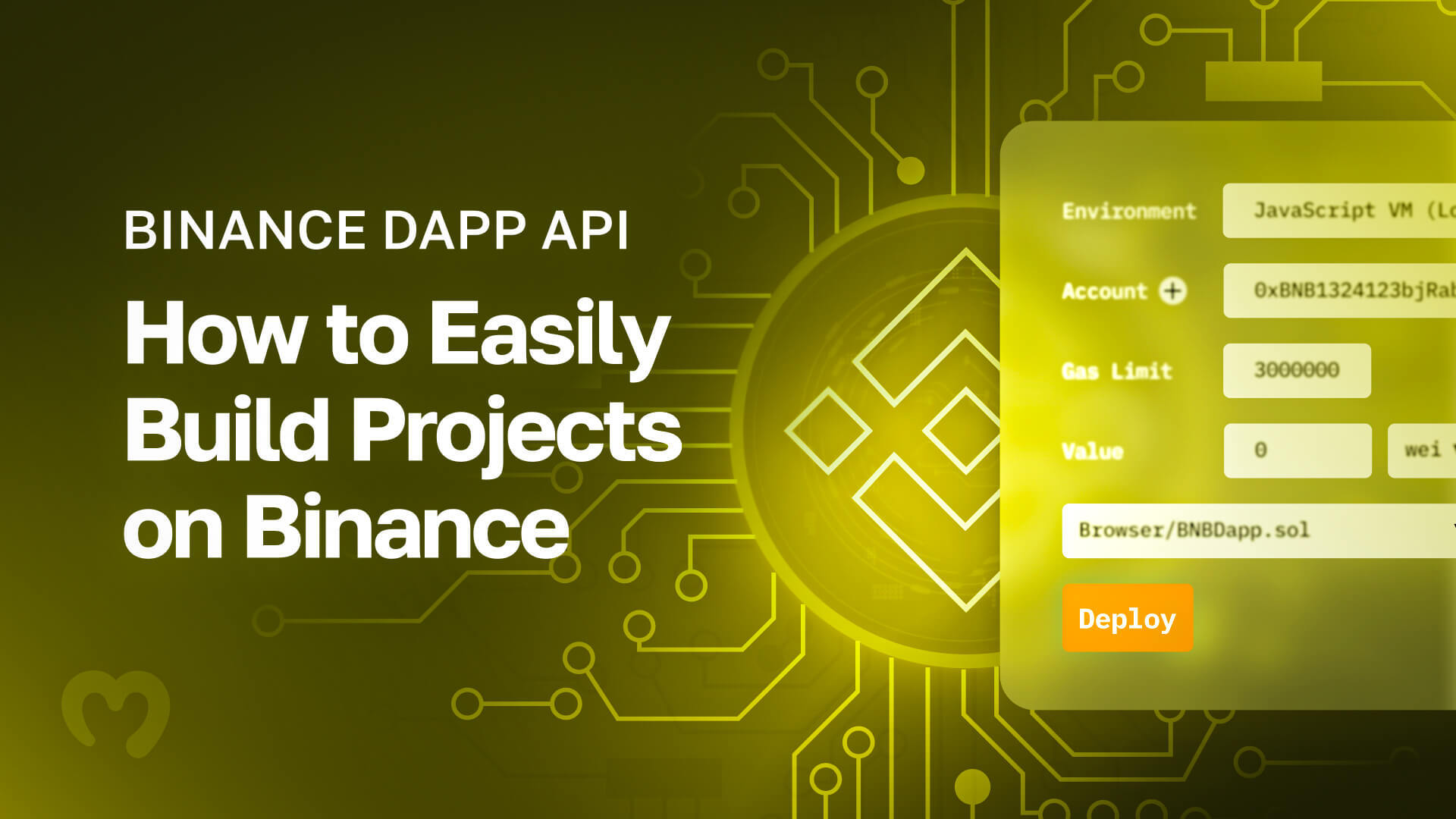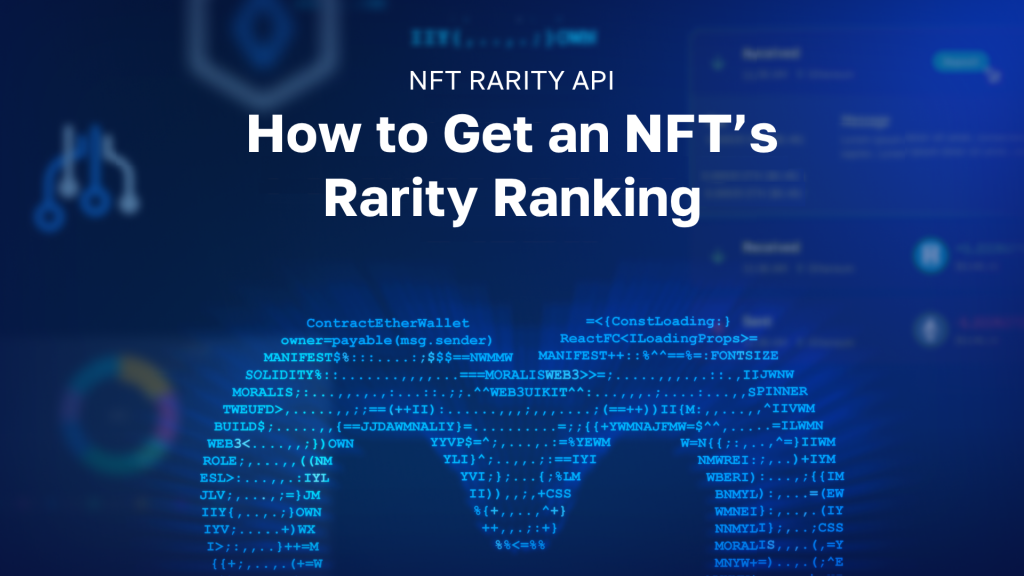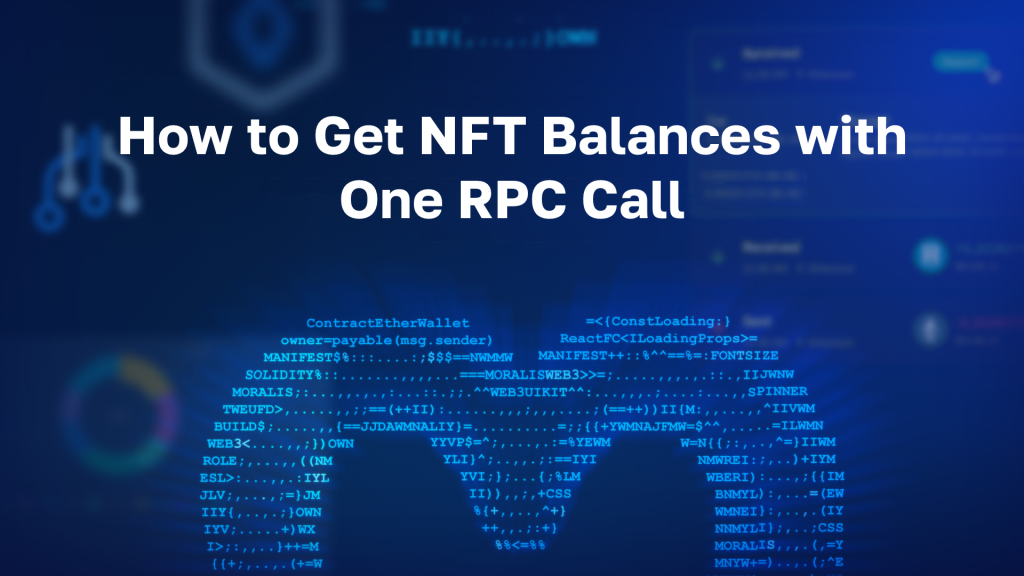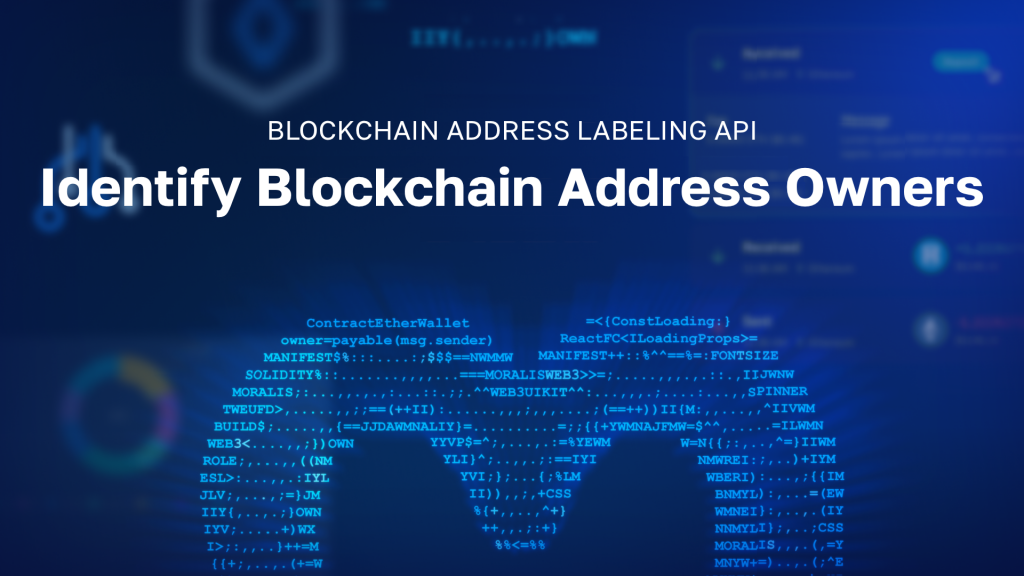Ethereum is the biggest blockchain for Web3 development, its chain has suffered issues with network congestion on numerous occasions. This has led to slow transaction speeds and exorbitant gas fees, even when executing token swaps worth only a couple of dollars. Because of this, developers are now focusing on alternative networks that are more economically sustainable, one of which is Binance. The Binance ecosystem features lower transaction costs, which presents opportunities and makes it an attractive substitute to Ethereum. But, even as a prominent Web3 development network, it can still be difficult to build sophisticated dapps without proper tools. For this reason, the demand for tools such as a Binance dapp API is high as this would enable a more accessible development process.
So, what exactly is a Binance dapp API, and why are they helpful? These are two questions that we set out to answer in this article. We’ll initiate with a brief walkthrough of what a Binance dapp API is to lay a solid foundation. Following this, we’ll look at how you can acquire a Binance dapp API through Moralis. Lastly, we’ll top everything off with a closer look at what’s possible with Moralis’ dapp API by providing examples of how the tool enables a more accessible development process. Consequently, if you follow along, you’ll hopefully learn everything regarding the basic fundamentals of what a Binance dapp API is and how they can help you become a better developer!
Nonetheless, do you have the ambition to become a blockchain developer? If so, then you’re in the right place! Moralis provides everything you need to develop notable dapps quickly and easily. So, sign up with Moralis for free and begin your Web3 development journey immediately!
What is a Binance Dapp API?
To answer the question “what is a Binance dapp API?” we first need to explore the intricacies of APIs. API is an abbreviation for “application programming interface”, and they facilitate the communication between two pieces of software. You’re in contact with APIs whenever you use an app, send a message or browse social media. As such, they’re essential for the infrastructure of both Web2 and Web3.
All dapps or web applications must generally connect to the internet and transmit information to a server. The servers receiving the data need to interpret everything, perform actions, and send back a response to the user’s device. The device then needs to analyze the information and present it to users in a readable way. This entire process is generally mediated by an API.
This suggests that APIs are responsible for transferring or translating a bunch of instructions for reciprocal understanding. By doing so, an API can ensure reliable programming in a controlled and safe development environment through the supply of functions consistently on query.
As such, in the context of Binance and dapps, an API essentially ensures the functionality mentioned above regarding dapp development on the Binance network. A Binance dapp API, therefore, enables you to develop exciting dapps in a more accessible manner. This means you can focus on other parts of the development process, such as creating a compelling user experience (UX) and user interface (UI). If you have an interest in UI development, check out our guide on how to create a great dapp UI using Moralis’ web3uikit!
What’s more, there are additional types of APIs in relation to, for example, NFTs. If this sounds interesting, please check out Moralis’ NFT API, which supports several networks, including Binance.
Why Create Binance Dapps with Moralis?
While Ethereum remains the most prominent development blockchain, the network has its limitations with congestion. However, these issues indicate that the industry is on the right track since it directly results from increased adoption and transactions occurring on the network. This congestion issue inaugurates high transaction costs, making it more costly to develop and run a dapp on the Ethereum blockchain. This is one of the most significant reasons developers opt for other networks such as Binance.
Nonetheless, even if Binance is smaller than Ethereum, it is by no means a small network. As one of the largest networks, it has a strong reputation, a large community, and an extensive pool of developers continuously expanding the network. As such, both lower transaction costs and the network’s reputation make it an attractive alternative for dapp developers.
The two previously mentioned factors, in combination with Moralis, makes Binance dapp development significantly more accessible. As the most prominent operating system for blockchain development, Moralis offers an extensive backend infrastructure along with some of the best tools in the game. For example, with Moralis, you can avoid the limitations of RPC nodes and create dapps more efficiently.
Tools such as Moralis Speedy Nodes, native support for IPFS, and the Binance dapp API provide a significantly more accessible development experience. However, before diving deeper into the Binance dapp API, we’ll cover another essential benefit of working with Moralis: cross-chain compatibility.
Cross-chain Compatibility – Create Binance Dapps for the Future
Although the blockchain industry remains in its infancy, the field is rapidly evolving and expanding. This provides a degree of uncertainty, making it hard to predict which chains will dominate in the future and provide the best solutions for the coming years. As such, it’s essential to create future-proof dapps that can transfer between chains seamlessly. This process becomes quite difficult and tedious if you opt to develop directly on top of RPC nodes.
Instead, if you choose to develop dapps using Moralis, this aspect is covered due to the operating system’s cross-chain interoperability. With Moralis, you have the option to build dapps that are fit for several chains, and you can easily port over dapps to add chains with a few simple clicks. You’ll find Ethereum, Polygon, Avax, Fantom, Cronos, and Binance (BSC) among the supported networks.
What’s more, Moralis is constantly evolving and adding new networks/reputable chains. If you use Moralis, you won’t limit your projects to one chain and don’t need to start from scratch when transitioning to other networks. In addition, suppose a dapp is suited for several chains. In that case, you will cater to a more extensive set of potential users, making your projects more attractive to a more significant number of people.
What is Moralis’ Binance Dapp API?
To avoid the hassles of running their own nodes, developers are turning to so-called blockchain node providers. One of the major providers on the market is Infura; however, this provider mainly caters to the Ethereum network. Instead, an additional alternative is Moralis, which does more than just provide nodes and cross-chain compatibility.
In addition to being a reputable node provider, Moralis offers several other essential tools that provide a more compelling developer experience. You’ll find Moralis’ Web3 SDK and Web3 API among these tools. What’s more, these tools are also cross-chain compatible. As such, the Web3 API works for several networks making it a perfectly viable Binance dapp API. Further, the Binance dapp API works excellent no matter what type of Binance project you’re working on. As a result, it doesn’t matter if you want to create an NFT marketplace, wallet, DeFi platform, Web3 game, etc., the API still provides you with a more accessible development process.
Many dapps share a set of standard features as they, for example, require users to authenticate themselves, send transactions, fetch balances, and more. For this reason, it makes sense to avoid reinventing these functionalities from scratch for all your dapps. Instead, you can utilize the Moralis Binance dapp API to implement this feature by simply copying and pasting already developed snippets of code.
How Does Moralis’ Binance Dapp API Work?
Now, with a better understanding of Moralis’ Binance dapp API and having explored the benefits of working with Moralis, we can take a closer look at how the API works. In the following sections, we’ll look at how you can utilize the API to acquire essential information when developing Binance dapps.
The examples below will cater to the Binance network; however, each function and code snippet is compatible with other chains alike through the cross-chain compatibility nature of Moralis. This suggests that if you’re looking to, for example, create an Ethereum dapp or build Polygon dapps, you can utilize the same methods with a few tweaks.
Nonetheless, let’s take a closer look at how you can populate your database with all sorts of information with a single line of code!
Populating Your Dapp’s Database
Many dapps share some common functionality they need to implement. A clear example is the ability to authenticate users and allow them to log in. If you opt to implement this yourself, it becomes quite the hassle and will take up an abundance of time. However, with Moralis, you can authenticate with MetaMask through the following code snippet:
Moralis.authenticate().then(function (user) {
console.log(user.get(''))
})The code above allows users of your dapps to login in with their Web3 wallet. What’s more, it’s possible to utilize other solutions to authenticate users as well. A prominent example is WalletConnect, which is great if you’re developing mobile applications. If this sounds interesting, check out our article on how to connect users with WalletConnect.
Once a user signs in, this will automatically populate your Moralis database. This information will then be updated in real-time to supply you with the latest on-chain data. In the screenshot below, you’ll see some of the information you receive access to. But how do we fetch and use this data in our dapps? Let’s have a look in the following section!
Binance Dapp API – Reading the Database
With access to critical on-chain information, we might need to query this data. This is an additional process where the Binance dapp API comes in handy as you can use short snippets of code to access this information. For example, here is how you can get token balances and transaction history:
- Mainnet User Transactions:
const transaction = await Moralis.Web3API.account.getTransaction();- Native Token Balance:
const balance = await Moralis.Web3API.account.getNativeBalance();- Token Balance:
const balances = await Moralis.Web3API.account.getTokenBalances();These are only a few examples, and you can also query information regarding NFTs. However, if you’d like to learn more about this, please check out Moralis’ NFT API. If you’re especially interested in the Binance network, our “Binance NFT API” guide is perfect for you!
Binance Dapp API – Sending Assets
In combination with token and transaction history data, it’s also beneficial to allow users and dapps to transfer assets. For example, if you’re looking to create a Web3 Amazon marketplace, you would like your dapp to be able to make transactions. This is, once again, where Moralis’ Binance dapp API enters the picture to provide you with accessible solutions:
Sending Native Tokens:
const options = {
type: "native",
amount: Moralis.Units.ETH("0.5"),
receiver: "0x..",
};
let result = await Moralis.transfer(options);Sending BEP-20 Tokens:
// sending 0.5 tokens with 18 decimals
const options = {
type: "erc20",
amount: Moralis.Units.Token("0.5", "18"),
receiver: "0x..",
contractAddress: "0x..",
};
let result = await Moralis.transfer(options);Transferring NFTs:
// sending a token with token id = 1
const options = {
type: "erc721",
receiver: "0x..",
contractAddress: "0xc02aaa39b223fe8d0a0e5c4f27ead9083c756cc2",
tokenId: 1,
};
let transaction = await Moralis.transfer(options);However, this only covers some essential parts of Moralis’ Binance NFT API. If you’d like more extensive information, please check out the official Moralis documentation. What’s more, we recommend checking out some of our guides on how to create a BEP-20 token or create BSC dapps to see the full power of the Binance dapp API firsthand!
What is a Binance Dapp API? – Summary
As the industry moves towards mainstream adoption, networks such as Ethereum are experiencing issues with congestion. For this reason, developers need to turn to more economically viable solutions like the Binance network. What’s more, Web3 development can generally be quite tricky, which is why developers need all the help they can get. Moreover, one factor contributing to a more accessible dapp development process on the Binance network is an API.
A Binance dapp API facilitates the communication between two pieces of software to make it easier and more efficient to develop applications for the Binance network. One way to acquire a great Binance dapp API is through Moralis. Moralis’ Web3 API is cross-chain compatible, and Binance is one of the supported networks. As such, you can utilize this API when developing Binance dapps. For example, the API allows you to authenticate users, query information regarding balances, transaction histories, etc., and send different tokens with only a few lines of code. As such, it becomes easy to develop Binance dapps quickly when working with Moralis.
Additional tools such as Moralis’ Metaverse SDK allow you to create advanced metaverse projects. For example, you can build a medieval metaverse game, create a metaverse dapp with Unity, and even create your own metaverse!
Furthermore, if you plan on becoming a blockchain developer, the next step is to sign up with Moralis. Creating an account is free, and you’ll receive immediate access to the backend infrastructure of the platform along with all the prominent development tools!







